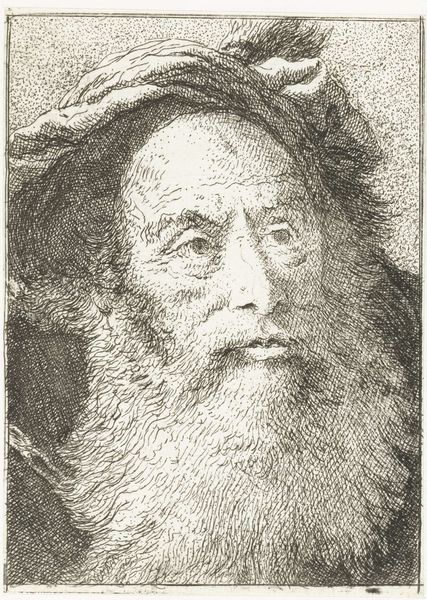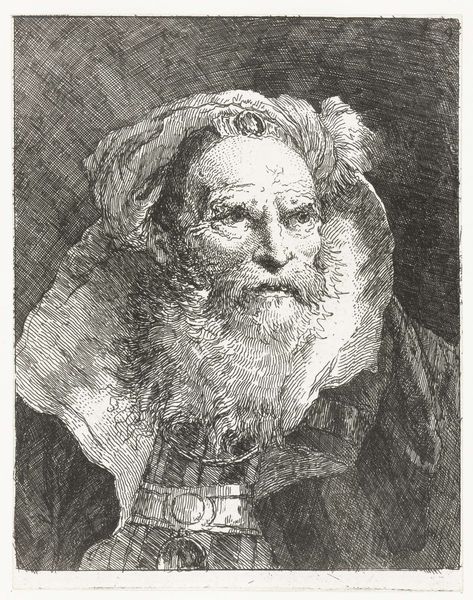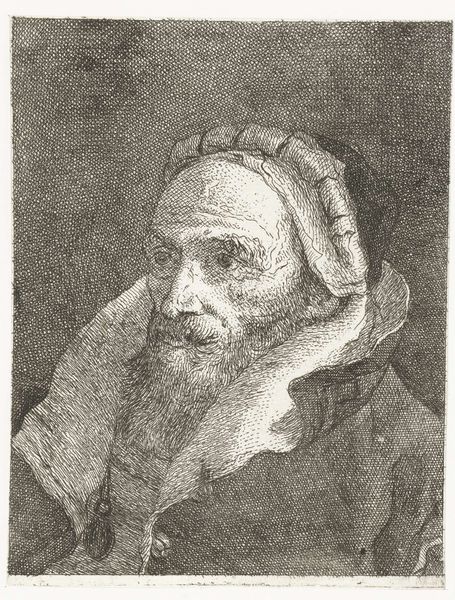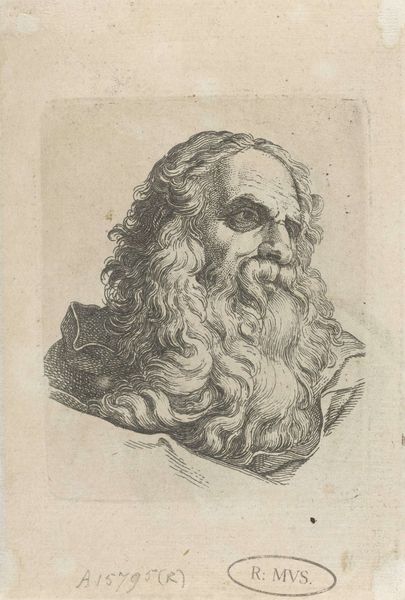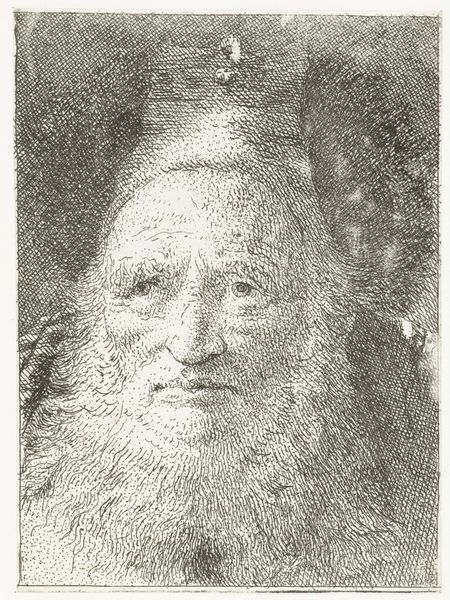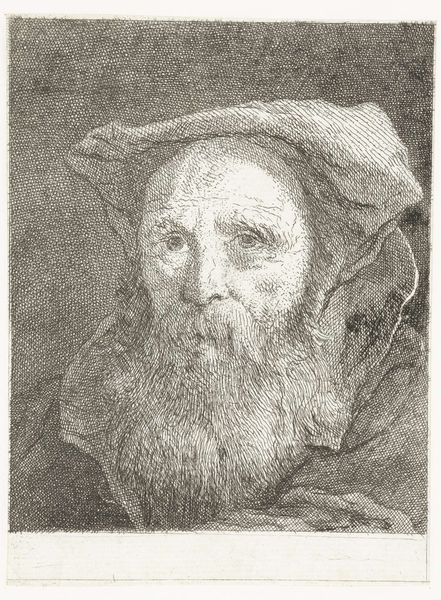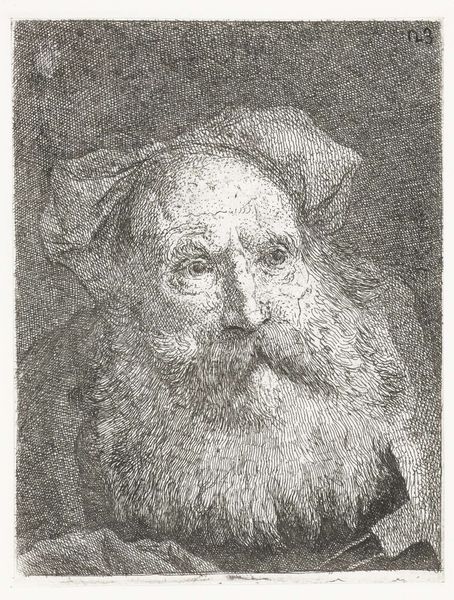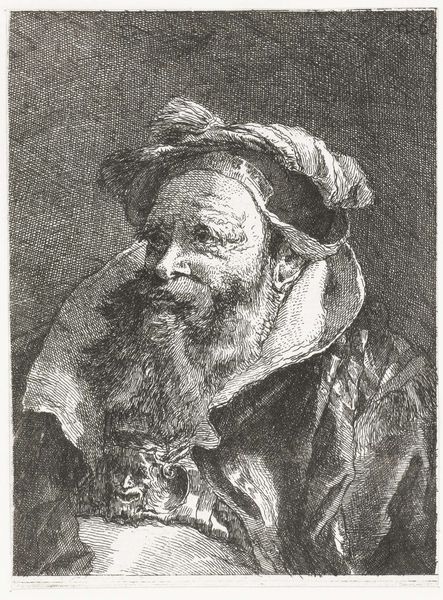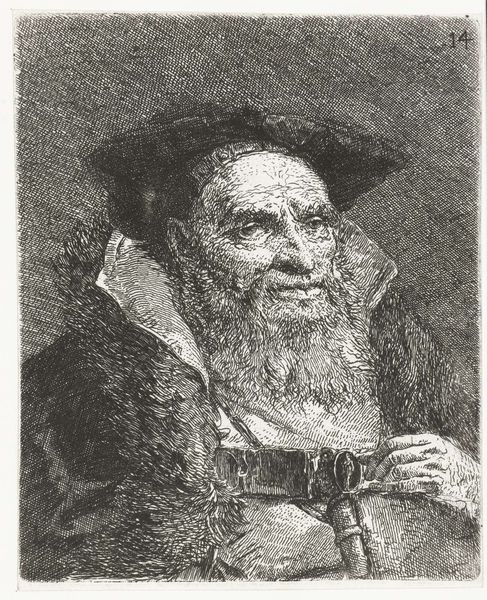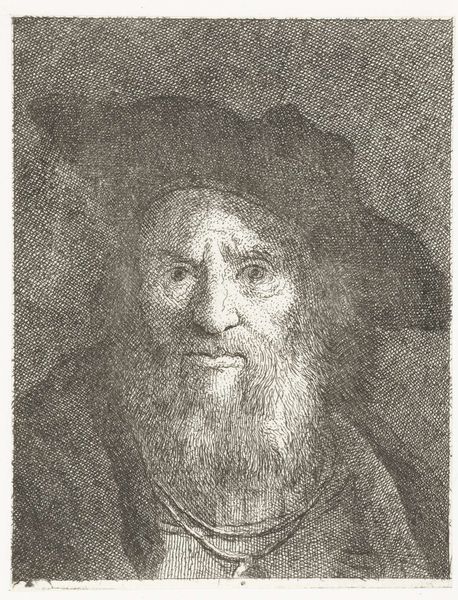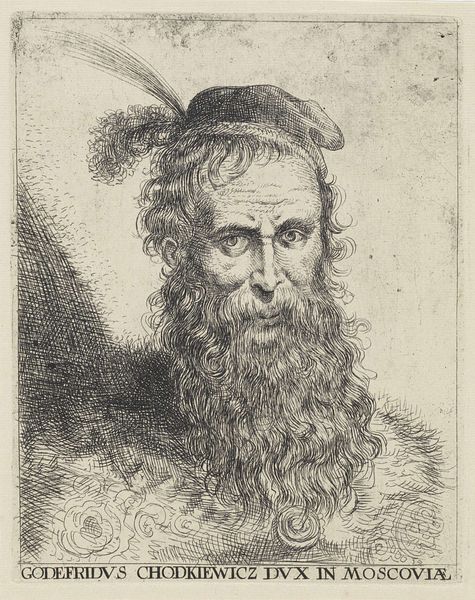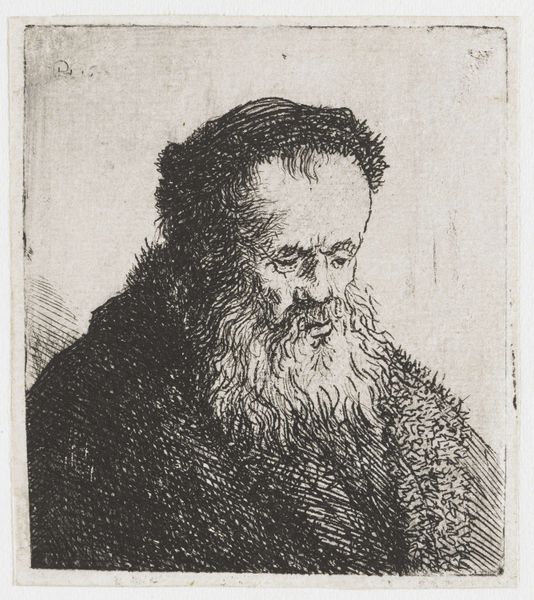
Dimensions: height 122 mm, width 89 mm
Copyright: Rijks Museum: Open Domain
Curator: Giovanni Domenico Tiepolo created this etching, "Man with Beard and Headdress with Feather," between 1771 and 1774. What's your immediate reaction to this image? Editor: There's a striking intensity despite the muted tones. It's incredibly detailed, focusing on texture and a profound sense of age and maybe some weariness. Curator: Age is central. Notice the Baroque style's emphasis on realism, which highlights the lines and contours of the man's face and beard. Tiepolo invites us to see the subject's interior life. The beard becomes this river of accumulated time. Editor: You know, etching allowed for the mass production of images and thus a broader dissemination of information, but, more so, it is an economical form that challenges traditional hierarchy of art. It almost makes me question whether it should even be considered high art. Curator: Ah, but Tiepolo’s mastery is clear, wouldn't you say? Consider the headdress. That feather, like his unkempt hair, is indicative of a sort of... theatricality. Perhaps referencing the Venetian Carnival or commedia dell'arte characters. Editor: The crosshatching in the etching is indeed fascinating, allowing a tonal range usually associated with much slower engraving techniques. But that leads me to wonder, who was consuming this image, what was the function of making this Baroque styled portraiture accessible through the mechanization of print? Was Tiepolo merely producing images to earn money through reproductive printmaking? Curator: Perhaps he aimed to make archetypes accessible, these representations of wisdom and perhaps a certain rugged individuality, or even satire, accessible to the wider world, to participate in creating common symbolic meanings? The man is no one and everyone. He could be an actor. A philosopher. He seems a vehicle of emotions which are deeply embedded in Italian tradition and its symbolic expression. Editor: Interesting how you look at symbolism while I remain tethered to production. Tiepolo was able to harness print for its capabilities in disseminating style for larger groups to admire the Baroque aesthetic in the comfort of their homes. It truly transforms our relationship to image and class. Curator: That's a valid perspective. The power of symbols in visual culture rests on access and availability, on shared meaning. Thank you. Editor: It was great examining an aesthetic period known for theatrical art being made accessible to everyday life through the process of reproduction, very clever indeed!
Comments
No comments
Be the first to comment and join the conversation on the ultimate creative platform.
